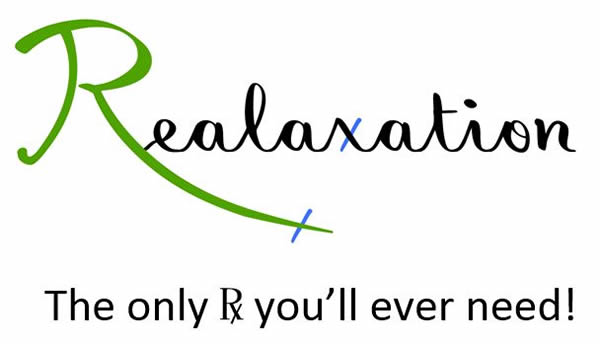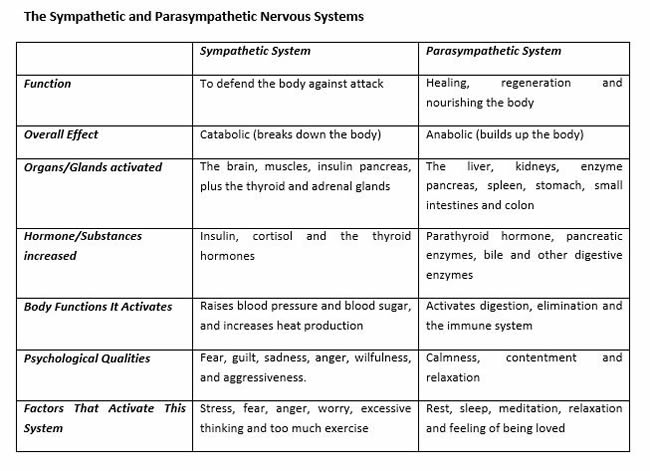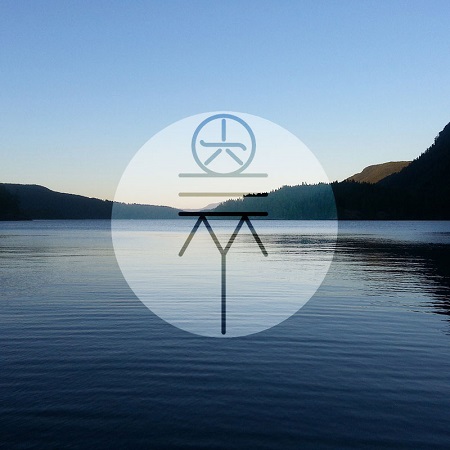Positive Health Online
Your Country

Realaxation® - Method Created by Leon Eeman, Revisited
by Dr Toff (Christopher) Freeland(more info)
listed in stress, originally published in issue 245 - April 2018
We often hear people saying “Just relax!” Quite right! Of course you know that you should relax, but has anyone ever told you how to do so, or even why? Probably not!

This Realaxation® system is the result of many years of research into suffering of all kinds, physical, metaphysical, mental, spiritual and things (fortunately) forgotten, conducted by a number of people, foremost of whom is Leon E. Eeman. Incredibly simple, so extremely difficult, it can be understood in five minutes with a demonstration of three very straightforward postures, but requires a few hours’ practice. The greatest benefit is gained if used regularly, one session requiring only three minutes, preferably morning and evening.
A brief reminder of how we operate physiologically might help elaborate the purpose of Realaxation®. For the sake of simplicity, the human nervous system consists of:
- The voluntary system, primarily concerned with movement and sensation, and
- The involuntary or autonomic system, mainly controlling functions over which we have less conscious control, such as digestion of food, blood pressure and heart rate, etc. The latter system has two branches: the sympathetic and the parasympathetic.
The Sympathetic Branch activates the glands and organs that defend the body against attack (the fight or flight system). Its nerves direct more blood to the muscles and the brain, causing the heart rate and blood pressure to increase, while decreasing the blood flow to the digestive tract organs. It also activates the thyroid and adrenal glands to provide extra energy for fighting or running away. Nervousness, stress or feelings of panic are what one feels when in a sympathetic state of readiness. The sympathetic system is catabolic - it breaks down molecules to release energy to prepare for defence. After the initial rush a feeling of fatigue sets in, as this system uses up energy and depletes the body.
The Parasympathetic Branch is concerned with nourishing, healing, elimination and regeneration. It is anabolic, it stimulates digestion, as well as the immune system and eliminative organs - liver, spleen, stomach and intestines. The parasympathetic nervous system, activated by rest, relaxation and happy thoughts, is essential for balanced living and for all healing. Moving yourself into a healthy parasympathetic state, and staying there as much of the time as possible, helps heal all conditions, whether physical, mental, nervous or emotional. The feeling often associated with the parasympathetic state is one of lethargy or fatigue, because you are so relaxed. It is not unhealthy, on the contrary, it indicates a state of repair and rebuilding in progress.
The sympathetic powerfully inhibits the parasympathetic. This is, of course, a survival mechanism because the emergency system, the sympathetic, takes precedence over relaxation and healing, and one system or the other is activated almost all of the time. There is just one nervous system and the individual functions as a whole. The idea that the two divisions oppose each other is a misleading simplification because neither division is ever activated in its entirety. Rather, each division consists of a series of discrete functional pathways that may be activated from the central nervous system either independently or in patterns, according to the particular requirement of the particular daily activity that is contributing to bodily homeostasis. Different emergency states require different patterns of activity, and normal daily life (apart from emergencies) also requires patterned autonomic activity.
The aim, to ensure balance and healing, must be to keep the sympathetic system ‘turned off’ as much as possible and the simplest way to do this is to rest, relax and think calming thoughts. As soon as you think fearful or angry thoughts, or become too physically active, the body shifts into a sympathetic stance which is what the majority of people know because they favour the sympathetic branch over the parasympathetic. When the two systems are working as they should, the tendency is to rest often and easily. One can, however, perform at “top speed” with equal ease. When challenged by stress, the balanced person is able to respond with vigour and fortitude.
The parasympathetic system reduces activity of the brain, the muscles, and the adrenal and thyroid glands. When no situation is pressing, the balanced person can comfortably choose to rest and can go to sleep easily and deeply. Excessive use of the sympathetic system inhibits rest and sleep. Most people overuse their sympathetic nervous system and do not spend enough time in the parasympathetic state to rebuild their bodies fully. The causes for sympathetic dominance include: too much exercise, work or stress (including geopathic stress), living in fear, anger or resentment. Once in the habit of sympathetic dominance, a vicious cycle can develop. You become used to being tired, so that if, by chance, you rest a lot one day, you use up the energy the next day, instead of continuing to rest, not allowing the body to use the energy accumulated for healing and rebuilding and as a result, depletion and imbalance set in.
What You Can Do
There is much you can do to keep the autonomic system functioning well.
Recharge the body’s magnetic field – Stretch – Breathe correctly
– Drink alkaline water – Rest often.
Try to sleep at least 8 hours or more each night. The hours before midnight are by far the best for recuperation. Avoid excessive activity of any kind or getting exhausted by any activity you engage in, including exercise. Do not exercise to ‘run away’ from stress; exercise is a powerful sympathetic stimulant. More rest is often what is really required.
Breathe correctly. Not just at your yoga class, but all the time. Breathing is little understood, like relaxing, except there is a problem if someone has to tell you to breathe! Deep breathing turns the sympathetic system off – so to speak. Breathing is of substantial help for the emotional and mental outlook, but by permanently keeping a positive and harmonious attitude, there is great benefit to be had. There are many reasons to feel gratitude, forgiveness, compassion and joy, not least, they all lead to peace of mind and harmony. By allowing more room on your horizon to these positive emotions, there is little space for disruptive, negative thought.
Eat and drink well. Enough has been written about that elsewhere but perhaps not enough emphasis has been placed on drinking energized alkaline water. As someone said, we die of acid, so why not delay that a while and drink water with a higher pH. One thing worth mentioning when speaking of eating is that the sign of a full stomach is belching, STOP eating instantly when that happens, otherwise there is overload, undigested food and overwork for the entire metabolism, i.e. more stress.
Reduce stress levels as much as possible. Stress is a major stimulant to the sympathetic nervous system. Stress within the body is generally due to fatigue, muscle tension, spinal misalignment or nutritional deficiencies, amongst others. It also comes from outside e.g. financial, work or family stress. Geopathic stress – energies flowing up from the ground combined with those on the surface - albeit unseen, is recognized as being the cause of numerous forms of problems, best check your sleeping/working area.
If you are content with what you have as your lot in life, a host of unpleasant emotions and feelings are replaced, so allowing the sympathetic system to rest.
Conclusion

Realaxation®
Physical harmony can be much enhanced by relaxation, here is a guide how to relax, if you could manage this, it will not do you any harm, you never know, it might even do you some good!
Stretching before rest is necessary to achieve subjective efficiency on the mechanical plane during sleep, it is also a good start to the day. The following is a simple routine which can take just a few minutes after a little practice:
1. Lie on the back, both arms loosely extended in the form of a cross, concentrate on the feeling of relaxation in the whole body, then.
2. Stretch both thumbs as far as possible in the alignment of the arm, keeping the arms straight and on the floor, make sure, by careful attention, that all the muscles connected with the thumb, from the shoulder down, are stretched to the utmost possible length. Follow the same procedure with each of the four fingers separately in both hands jointly, and with all the muscles connected to them, all the way from the shoulders down to the finger tips, and from finger tips to finger tips. Let go, release all the muscular tension of the stretch. Start again, reaching out but without raising the arms or hands off the ground, stretch from the head to the toes, in the same way trying to find the connection all the way through the body, feel yourself grow. And release, allowing the entire body to flop, making sure that there is no tension. If a certain area is tight, let’s say the wrist is causing you concern, focus on the sensation of flow and apply it to the wrist, creating a connection between the muscles of the forearm and the fingers, stretch them to their limit and let go! Concentrate on the sensation of relaxation, no tension, no effort, just a sinking into the floor.
A final comprehensive stretch of all four limbs and the head all together and again, release. Initially, spend a few minutes on each stage to become familiar with the tension-release idea until it becomes a natural reaction. If you are not applying the muscles, why waste energy?
3. Still on the back, raise the chest, abdomen and hips so as to form an arch supported by the shoulders and buttocks, eventually extend the arch to the heels after some practice. Accentuate the arch, piecemeal. Start at the shoulders and concentrate in succession on the stretching of the muscles of the chest, pit of the stomach, abdominal wall, front of the thighs, shin, top of the foot and toes, and then allow the whole body to drop, completely relaxed. Pay special attention to the tension points, locate them and work on them to release their strain. Use whatever speaks to you, visualization, breathing, speaking, stretching – but release the tension!
4. Sit up and bend forward, keep the knees straight, just wave hello to the toes, you don’t have to touch them, this is not a yoga exercise! Starting at the base of the skull, attend in succession to the stretching of the back muscles of the neck, shoulders, ribs, waist, hips, thighs, calves and soles of the feet. There must be no effort or contraction, take it very easily. Play with the 6 kilos of your head, stretch up and slowly allow the head to carry the spine forward, paying attention to the tension areas (generally shoulders, lower back, hamstrings). Don’t go into the pain zone! Rest on your back and relax the whole body.
There is only one rule in all this. No tension! You know where it lies and can let it go if you want but you must tell it to.
This process requires extreme attention as it promotes the most essential factor of improved subjective activity: increased awareness. With this same end of awareness in view, it is a good idea to rest between each step and register the effects.
The elimination of the first two causes of contraction, namely, conscious-physical and unconscious-physical contraction, produces the following results:
a) Reduction of expenditure of energy on objective processes followed by proportional increase in the expenditure of energy on subjective processes;
b) Reduction of awareness of objective processes as an effect followed by proportional increase in awareness of subjective processes, resulting in new possibilities for conscious control;
c) A loss of awareness of the outside ‘relatives’, time and space, and a proportional gain of awareness of the inside;
d) A deep sense of physical rest and, with it, a sense no less deep, intense physical work within.
When you have finished the stretching, allow a few minutes to recharge your biomagnetic field. Regardless of the polarity in the hands, just interlace your fingers. The polarities will be joined, negative and positive. Now, your feet. People with right-handed positive polarity, put your left foot over the right ankle. Right over left ankle for left-handed positive polarity. You will find out after five minutes if you made the wrong choice! You will feel enervated, so change foot.
With hands and feet joined, sitting at your desk, on the bus, lying down, wherever, you have closed the biomagnetic loop of the body’s field and are recharging. Why do that? The current of the blood’s movement through the veins and the energy through the meridians result in an electric charge, measured in millivolts. 10 mV and you are at death’s door, at 70 mV - and you will not get higher - you are fighting fit. Most people come in at 25 mV, which is weak and the immune system is probably struggling.
No one, to my knowledge, has ever pointed out that this is just what you are doing when sitting cross-legged in meditation, one hand in the other, but no matter. One often sees old people in this position, maybe their bodies react instinctively.
Bibliography
Eeman, Leon E. Co-operative Healing. London: Frederick Muller, 1947.
- Self and Superman: The Technique of Conscious Evolution. Ashingdon, Rochford, Essex, England: C. W. Daniel, 1927.
- The Sub-Conscious Made Conscious. London: Simpkin, Marshall, Hamilton, Kent, 1926.
Freeland, Christopher.J.S. The Way of the Skeptic, self-published, 2016.
Comments:
-
No Article Comments available
